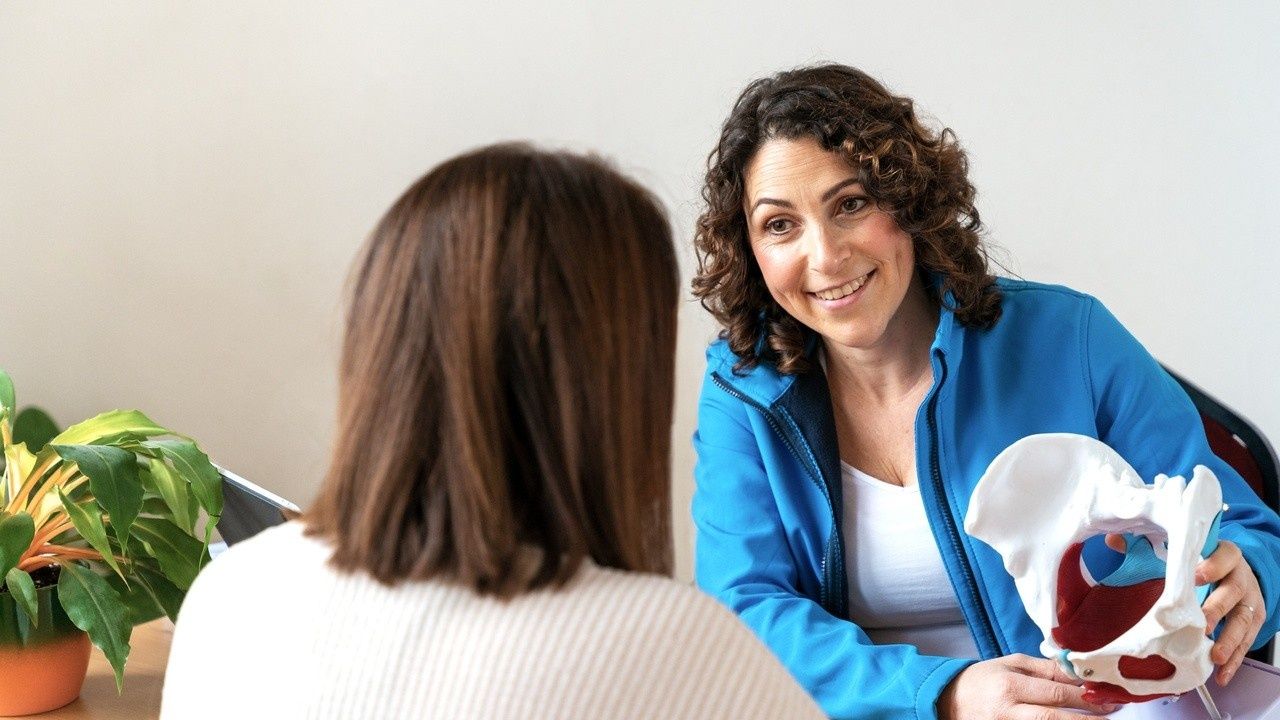Why Sitting Is Your #1 Enemy!

You might be surprised to know that it is often our daily habits and practices that impact our pelvic floor the most.
Lets look at some super simple quick fix approaches to help you see the fastest results.
So…. Why is sitting so bad you might ask?
Well...... now you've really got me up on my soap box.
Sitting slumped on the sofa is possibly one of the worst things you can do for your prolapse and pelvic floor. In fact siting has officially been branded as the new smoking for pelvic health. Sounds overly dramatic you might say, well lets take a look and you can be the judge.
What does sitting actually do to your pelvic floor? Sitting in any static position for a prologue length of time ultimately reduces the blood flow and oxygen to your pelvic floor muscles. For example; imagine you sit for 2 hrs, which is not uncommon at work or if you're watching TV. Imagine if you kept your bicep flexed for 2 hrs whilst you were doing this. How is your elbow going to feel when you try and straighten it? More to the point, how is your bicep going to feel?
Exactly… It’s going to feel stiff and sore. It's definitely not going to thank you for it.
Now imagine you do that everyday for your entire life, for possibly even longer periods of time than I've suggested. How do you think your bicep would feel then? Or your pelvic floor for that matter? Exactly, it's going to be very unhappy. Its probably going to be tired, stiff, sore and may even be weak. It's definitely not going to want to be holding anything up, or responding to the demands of your body, especially when you finally decide to get around to exercising or running. It will probably at this point, give you the middle finger, and say hold your own organs up i'm off, you're on your own. Sound familiar? Hmmmmm.
I can imagine no-one has put it like this before. Most people are too polite. But I'm not here to skirt around the real issues. I think you deserve the truth, and to understand that your body is amazing, but we have to take care of it if we want it to work for us when we need it. There are no magic wands, but there are some magic steps we can take that can make us feel a whole lot better.
Sorry if you thought that was it, I'm not quite done on the whole sitting issues. Lets take a look at your sitting position, and how the way you sit can also significantly impact your pelvic floor symptoms. For instance, if you are sitting slumped, which many of us are, especially when relaxing on the sofa or driving in the car, with our lower back rounded and our upper back rounded, then you are compressing your internal organs and pushing your prolapse down towards your vaginal entrance. With each breath you take, you increase that pressure and over time increase your symptoms. So hopefully I’ve put your off siting, or at least helped you to see how our daily practices can significantly impact our prolapse symptoms.
Don't worry I'm not going to just leave you without giving you some great tips on how you can start to rectify these problems.
1 - Awareness of our habits. - Becoming aware of our habits is the first step to changing them. Notice how you sit and how long you sit for. Notice how your body feels after you been sitting for a prolonged period of time.
2 - Set a timer and move every 20 mins. - Give your pelvic floor a chance. Every 20 mins get up and move around, if you’re at home walk up and down the stairs a couple of times, do some deep breathing and refresh that pelvic floor.
3- Walk - Walking is the best medicine for keeping the pelvic floor fit and healthy. 20mins a day will do wonders for your pelvic health and mental health,
4- Stretches - Giving your muscles time to stretch and relax will help keep them supple and responsive. Try these stretches daily to see how they can help your pelvic floor feel revived.
Give the above steps ago today and if you're ready for more help and support, be sure to check out my Pelvic Floor Essentials programme.
For just £49 you will learn everything you need to begin your journey to pelvic floor recovery.

